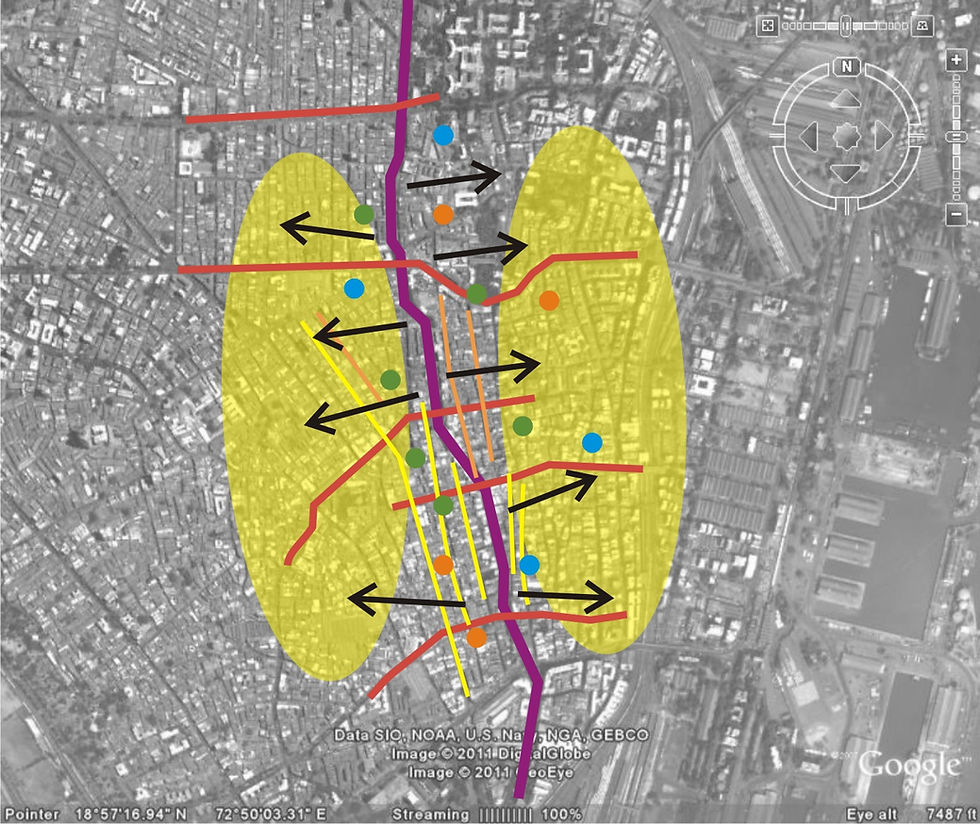The Slow Ride

The once sunlit and vibrant street turns into a dark and unattractive underworld lined with poor quality apartments, degenerated businesses and informal parking lots















Mumbai, Maharashtra
2011
For most Mumbaikars today, a reference to Mohammed Ali Road instantly conjures up images of the gastronomic delights offered up during the month of Ramzan. But the road itself, forming an important segment of the spine connecting north to south Mumbai, is far more than that. Cutting through some of the oldest neighbourhoods of the city, even today Mohammed Ali Road is home to commercially-thriving, culturally-vibrant predominantly-Muslim communities. As in most traditional neighbourhoods, the land-use in the area is mixed - residential-commercial - with a number of religious and secular institutions tying up the social fabric. The material fabric is densely built and architecturally eclectic. At the same time over-crowding, traffic congestion and inadequate infrastructure have resulted in increasingly deteriorating living conditions.
The 3 km long Mohammed Ali Road flyover (overpass) was constructed in the year 2000, dramatically changing the nature of the neighbourhood. By creating a bypass for a majority of the vehicular traffic, it allowed for an erasure of the area from the mental maps of many Mumbaikars. But it also meant that the two sides of the road - separated once by a snarling river of traffic could once again be connected to each other. The flyover in that sense created a gap - physically and metaphorically - that could ironically bridge the divided neighbourhood.
The slice of space below the fly-over used predominantly for parking today, offers exciting possibilities to create temporary and permanent community spaces that could contribute positively to the neighbourhood.
The area is densely populated and many families live in small cramped single rooms. At times you may have 5-6 people living in 150-200 sq.ft spaces.
The introduction of suspended, slow moving public spaces in the form of container boxes, is an infusion of public life into Mohammed Ali Road and promotional feature for this district at the same time. This slow neighborhood transport system contains flexible spaces that offer everything that is lacking in the neighborhoods: a library, study space, community meeting space, music room, cinema, tea house, minimarket, health center, love nest, sports facility and game room. These spaces act as social condensers for the neighborhoods and bring life back in the center of gravity. Customers, businesses and bustling street life return.
The boxes are suspended on rails that run from the beginning to the end of the flyover, approximately 2.2 km. At regular intervals, bridges connect to the buildings and street below.
How does one re-appropriate these spaces for neighborhood life and to turn the flyover into a positive constituent of urban space?
How does one create community spaces in a super-dense neighbourhood?












